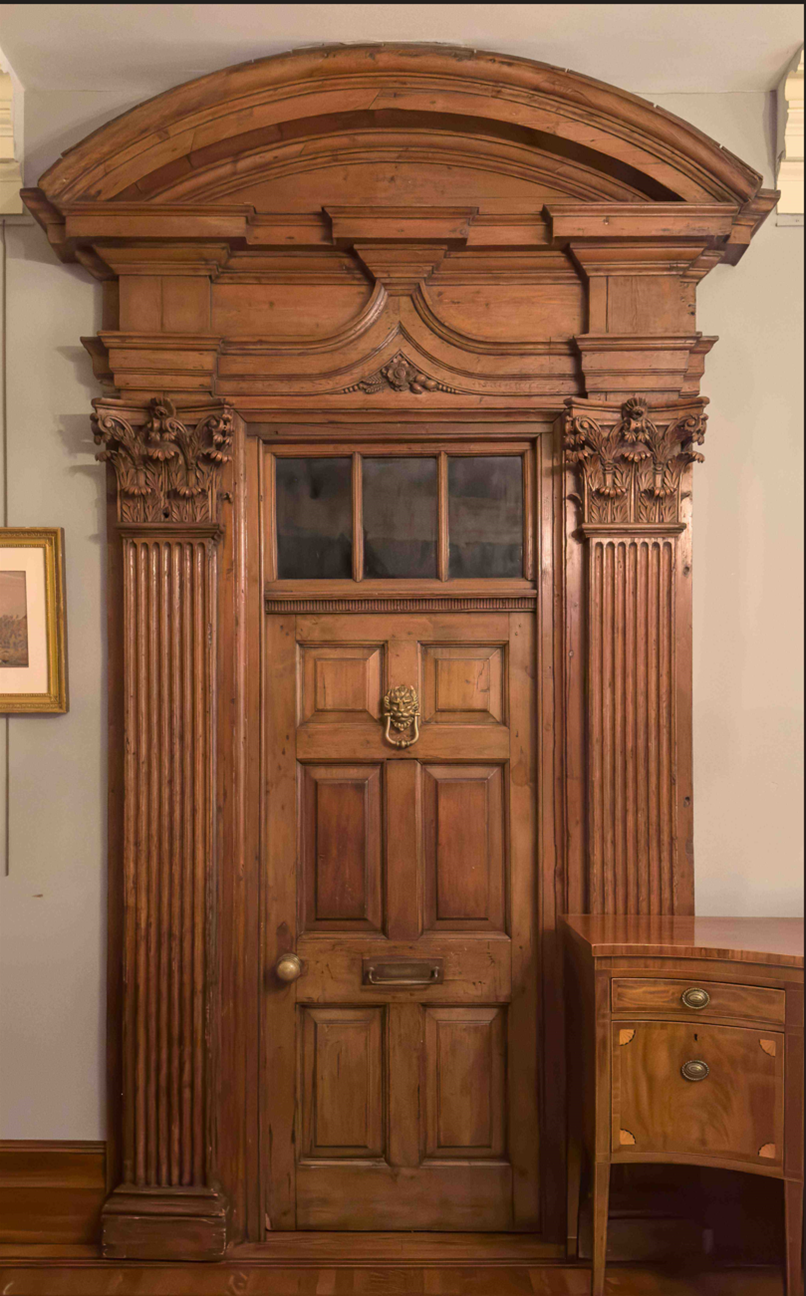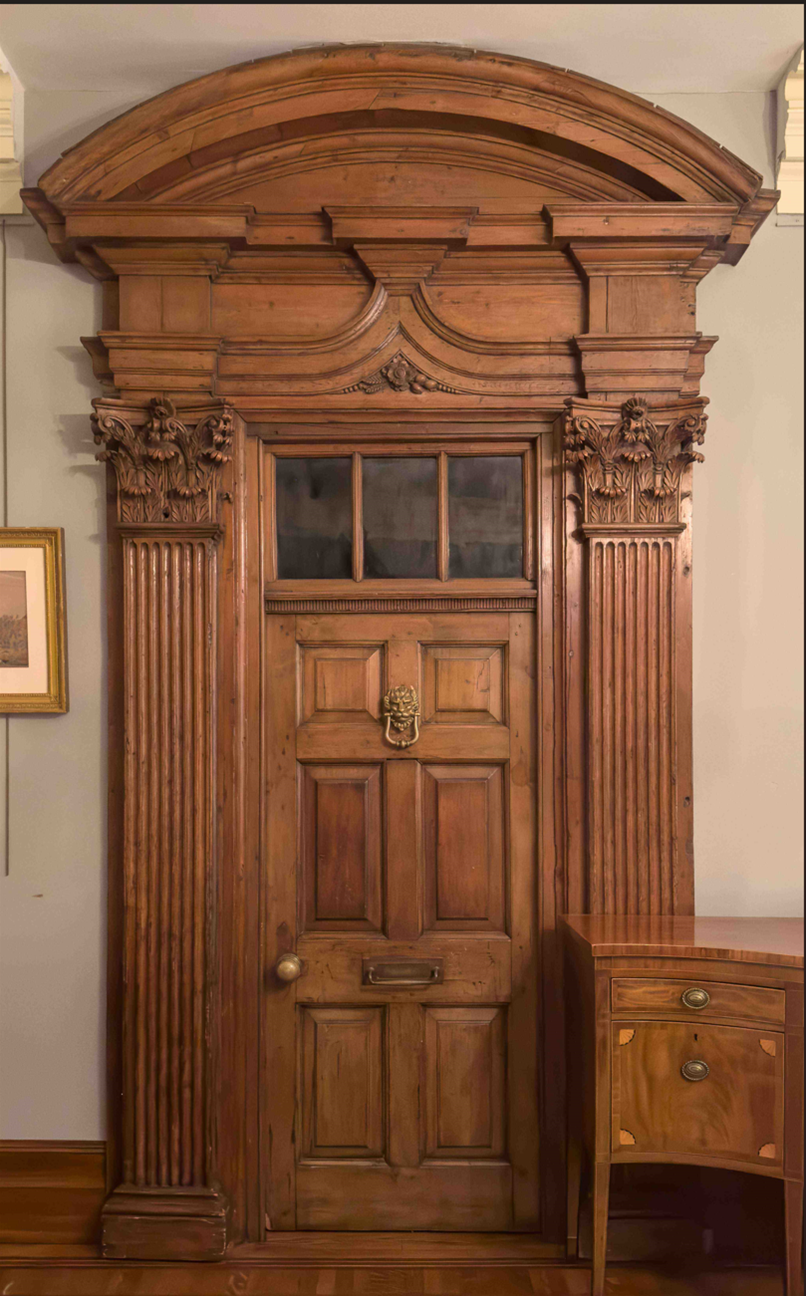A Georgian pine doorway from Lombard Street. Ca. 1715.
A Georgian pine doorway from Lombard Street. Ca. 1715.
Couldn't load pickup availability
An early Georgian pine doorway from Lombard Street, London. Ca. 1715. Installed on the east wall of the dining room.
Surround: 12’ 1” x 7’ 1 ¼”; door: 6’ 4 ½” x 2’ 10”.
Lombard Street, sometimes called the Wall Street of London, has long been the center of banking in England. It was named for a land-grant made to Lombard merchants, who took the place of expelled Jews as bankers, in the mid-XIIIc. It was an area shaped architecturally by Christopher Wren; his church of St. Edmund, King and Martyr, was designed as a nod toward the Italian heritage of the area.
It is fitting, then, that this earliest of the doorways at Arader comes from the era directly after Wren’s London heyday, at the very beginning of the Georgian period (George I’s reign began in 1714). The doorway is transitional in style, from the Italianate Wrenian (the peaked frieze with its spray of fruit, flower and wheat, is particularly Lombard) into the sobriety of Georgian neoclassicism. The deeply carved acanthus of the Corinthian pilasters contrasts with the solid arched cornice. Atop the door is a glazed tripartite transom; the knocker is not original to the door.
The doorway came into the collection of the Art Institute of Chicago in 1933 (1933.781; sold by Stuart & Turner) — its reason for survival; Lombard street was heavily bombed in the Blitz — and was sold by the order of their Board at Sotheby’s New York 18 October 1997 (lot 389), where it was acquired.
Harris, John. Moving Rooms. New Haven and London: Yale University Press, 2007; p. 243, sub “Lombard Street.”


